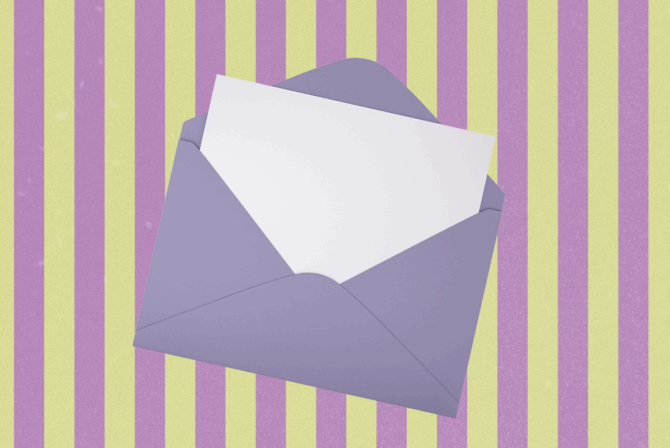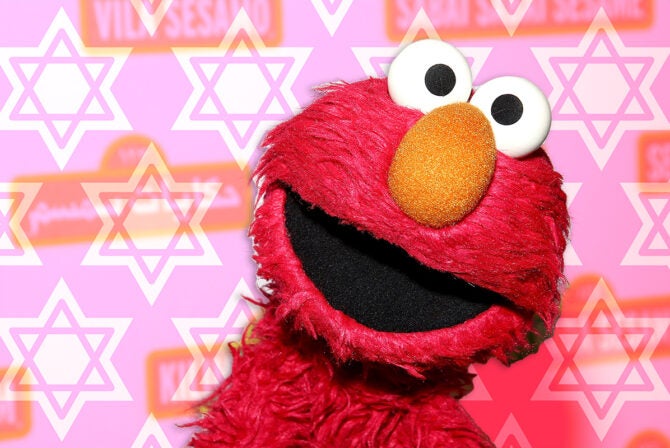How many of the 613 mitzvot can a toddler do? We have a PJ Library CD in the car my daughter likes listen to on repeat (please send us a new one soon, Mr. Grinspoon). One song called “Did a Mitzvah” to the tune of “Found a Peanut” includes such mitzvot as “hugged a sad friend” and “shared my Legos.” It has me thinking a lot about what a mitzvah really is (as opposed to common human decency). I also grapple with how can I appropriately instill the values of compassion and
Tikkun Olam
(repairing the world) for my precocious 2.5-year-old.
I am no halachic (Jewish legal) scholar, but I am pretty sure that sharing your Legos isn’t technically a mitzvah. Giving tzedakah (charity) is a good one, but my little lady doesn’t get an allowance yet, and she doesn’t exactly know the value of money. My personal favorite double mitzvah of doing “it” on a Friday night, isn’t really pre-school appropriate conversation. So how do I explain what a mitzvah really is? I try and do a mitzvah with her.
Many synagogues are getting ready to engage their congregants in a Mitzvah Day this spring. Though one day of service in your community may not put an end to hunger and human injustice, every little bit we do helps. I like to think of Mitzvah Day as the gateway drug to continual volunteerism. Aside from Mizvah Day activities you may be able to join, these are two ideas for making a meaningful mitzvah with your toddler any day (or several days) of the year:
1. Visiting old people.
You know who loves little kids? Old people. Maybe not all of them, but a lot of them. Hopefully your kids have grandparents and even great grandparents who are integrally involved in their lives. Why not add more love to their lives by visiting some old folks with your toddler? Our synagogue has a caring community program we call Project Hineyni, in which a group of women help coordinate people to bring meals to congregants in need.
A couple months ago, I picked up Charlotte from day care and we headed to the grocery store to pick up a nice dinner from the deli counter for a senior couple from our synagogue in need. Of course my initial intention was to cook something hearty and delicious to bring over, but these days, working full-time, I barely manage to get our dinner on the table most nights of the week.
We headed over to the couple’s house, who’ve lived there for well over 40 years, to drop off the meal and stay and kibbitz (chat) for a while. Charlotte was shy at first, which she normally is in front of new people, so I did most of the talking, asking about their children and grandchildren. Then I asked Charlotte about her day and before long she was doing summersaults on their rug and telling them about dance class and what she liked to eat for dinner. They were delighted.
2. Donating diapers, toys, car seats, pack n’ plays, etc.
Do you have a half a pack of size 4 diapers left, or an almost-full pack of those natural organic compostable diapers in size 3 that leaked all the time so you switched back to the Costco brand taking up room in your closet? And speaking of Costco diapers, did you ever get around to returning the half a pack of size 6 your kid doesn’t need because they actually decided to finally poop and pee in the potty? You know who wants those unwanted diapers? Women’s shelters.
They also often need age-appropriate toys and games for children who come to the shelters with their moms. Not sure what to do with your old car seat, high-chair, or pack n’ play? Organizations that work with new immigrants and refugees would love to pass them along to a family who has just arrived to the U.S. Many Jewish Family Service locations still have resettlement programs and the International Rescue Committee has offices in many cities across the country.
While you are gathering up all of these things you no longer want, talk to your child about how there are folks out there that need these things. Ask them to choose a few toys they want to give to children who don’t have any toys.
These mitzvot may bring up some challenging questions from your child like “Why?” It’s not an easy question to answer. Why is there so much inequality in the world? Why is their violence against women and displacement of peoples? I try to simplify as best I can and explain to my daughter that we are happy and blessed with lots of things and should share, because it’s nice to try and help make other people happy too.
Do you have ideas for doing mitzvot with your kids? Please share in the comments below.
Like this post? Get the best of Kveller delivered straight to your inbox.







